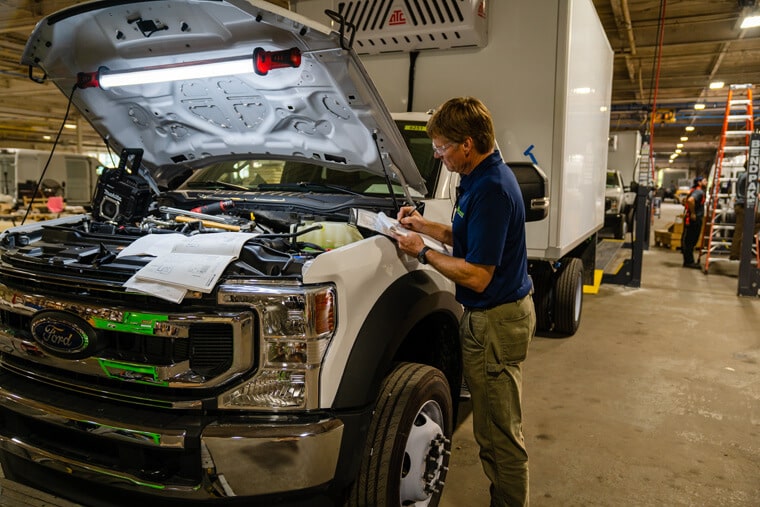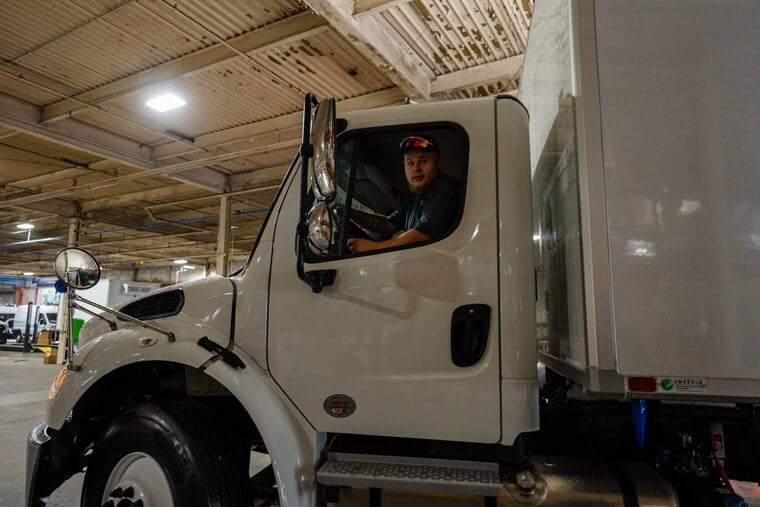
Moisture Intrusion in Refrigerated Trucks
Joe Dickman | December 1st, 2020
Moist. Just reading the word is enough to make some people’s skin crawl. Moisture can cause immense damage to freight shipments. Here is how to identify and prevent moisture intrusion in refrigerated trucks.
Why Moisture Is Bad
There are many reasons why moisture intrusion in reefers is bad. It can have a negative impact on the product. If there is enough moisture in the air, it can start to collect on items, potentially causing water or freezer damage. It can also lead to cracks and damage to the seal of the vehicle. This will cause the truck to use more fuel to continue producing the cold temperatures necessary to transport the product.
Signs of Moisture Intrusion
One of the biggest signs of moisture intrusion occurs when metal starts to frost over. You should also watch out for cuts and tears along the rubber seals used to insulate the doors. Gouges along the floor, walls, and ceiling are also places to inspect for damage from moisture.
Causes and Prevention
Wood frames and shelves inside the refrigerated vehicle can suffer great damage due to moisture intrusion. Water can severely compromise the integrity of the wood shelving, leading to the possibility of collapse. Replacing wood with metal shelves that resist rust can help keep this from occurring. Moisture intrusion can result from problems with insulation materials. Cracks in the seals and gaskets along with damage to the insulation can all cause significant issues with temperature efficiency. Performing routine checks on seal integrity and examining the insulation material can save money by preventing unnecessary fuel use.
If your delivery fleet is showing signs of wear and tear because of moisture intrusion in your refrigerated trucks, be sure to check out our line of custom reefers. We have a huge selection of refrigerated trucks for sale, ready to order for all of your refrigerated delivery needs.
Related Articles
Contact Us
Feel Free To Contact Us If You Have Any Questions
What does under DOT mean?
Questions regarding DOT requirements come up often. 10,000 lbs GVW (gross vehicle weight) and over are commercial vehicles that fall under the Department of Transportation regulatory requirements.
What is the difference between GVW and payload?
GVW or Gross Vehicle Weight is the entire weight of the vehicle including the payload. The payload weight represents the amount of cargo you are hauling.
What is a self-powered unit and a vehicle-powered unit?
A self-powered unit has its own fuel source and will run independent of the truck. This is the heaviest and most expensive option. While vehicle-powered units run off the engine via a compressor mounted on the engine. These are less expensive and lighter in weight but you must run the truck or plug the electric standby into shore power.
What does K-factor mean and why is that important?
K-factor is a term that stands for the overall insulating value of the container (truck body). Quite simply the lower the K-factor the better the truck body will be able to maintain a given temperature and require less energy to do so.
How much lighter is a Poly Van vs a US spec body?
Poly Van bodies are very light. On average we estimate we are 75-150 lbs per foot lighter than a traditional sheet and post foamed in place body. These weight savings translates to less fuel burn and less CO2 emissions, along with added payload, the most important benefit.






